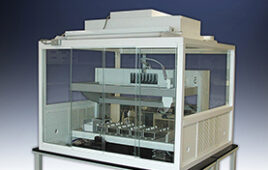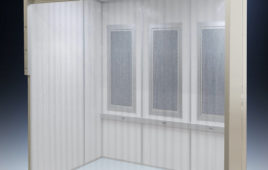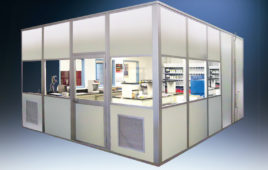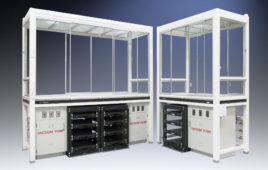In case you missed it (ICYMI), here are some of the stories that made headlines in the world of cleanrooms and nanotechnology in the past week.
 Scientists at the Department of Energy’s Oak Ridge National Laboratory have used neutrons to see novel behavior in materials — this discovery holds promise for quantum computing. The findings provide evidence for long-sought phenomena in a two-dimensional magnet. About 10 years ago, it was discovered that a theoretical model of microscopic magnets (“spins”) that interact in a fashion that leads to a disordered state called a quantum spin liquid. This “Kitaev quantum spin liquid” supports magnetic excitations equivalent to Majorana fermions — particles that are unusual in that they are their own antiparticles. Scientists have theorized that Kitaev interactions exist in nature in certain materials containing magnetic ions that exhibit strong coupling between the electron spin and orbital angular momentum. Oak Ridge researchers say that one way to observe spin liquid physics in such a material is to “splash” or excite the liquid using neutron scattering.
Scientists at the Department of Energy’s Oak Ridge National Laboratory have used neutrons to see novel behavior in materials — this discovery holds promise for quantum computing. The findings provide evidence for long-sought phenomena in a two-dimensional magnet. About 10 years ago, it was discovered that a theoretical model of microscopic magnets (“spins”) that interact in a fashion that leads to a disordered state called a quantum spin liquid. This “Kitaev quantum spin liquid” supports magnetic excitations equivalent to Majorana fermions — particles that are unusual in that they are their own antiparticles. Scientists have theorized that Kitaev interactions exist in nature in certain materials containing magnetic ions that exhibit strong coupling between the electron spin and orbital angular momentum. Oak Ridge researchers say that one way to observe spin liquid physics in such a material is to “splash” or excite the liquid using neutron scattering.
 Researchers from the University of Waterloo as well as the National Research Council of Canada have, for the first time, converted the color and bandwidth of ultrafast single photons using a room-temperature quantum memory in diamond. Shifting the color of a photon, or changing its frequency, is needed to optimally link components in a quantum network. For example, in optical quantum communication, the best transmission through an optical fiber is near infrared, but many of the sensors that measure them work much better for visible light, which is a higher frequency. Being able to shift the color of the photon between the fiber and the sensor enables higher performance operation, including bigger data rates.
Researchers from the University of Waterloo as well as the National Research Council of Canada have, for the first time, converted the color and bandwidth of ultrafast single photons using a room-temperature quantum memory in diamond. Shifting the color of a photon, or changing its frequency, is needed to optimally link components in a quantum network. For example, in optical quantum communication, the best transmission through an optical fiber is near infrared, but many of the sensors that measure them work much better for visible light, which is a higher frequency. Being able to shift the color of the photon between the fiber and the sensor enables higher performance operation, including bigger data rates.
 Finally, University of Pennsylvania engineers have developed a new approach for making transistor devices, by sequentially depositing their components in the form of liquid nanocrystal “inks.” This research could make it possible for electrical components to be built into flexible or wearable applications, as the lower-temperature process is compatible with a wide array of materials and can be applied to larger areas. The researchers’ nanocrystal-based field effect transistors were patterned onto flexible plastic backings using spin coating but could eventually be constructed by additive manufacturing systems such as 3D printers.
Finally, University of Pennsylvania engineers have developed a new approach for making transistor devices, by sequentially depositing their components in the form of liquid nanocrystal “inks.” This research could make it possible for electrical components to be built into flexible or wearable applications, as the lower-temperature process is compatible with a wide array of materials and can be applied to larger areas. The researchers’ nanocrystal-based field effect transistors were patterned onto flexible plastic backings using spin coating but could eventually be constructed by additive manufacturing systems such as 3D printers.




